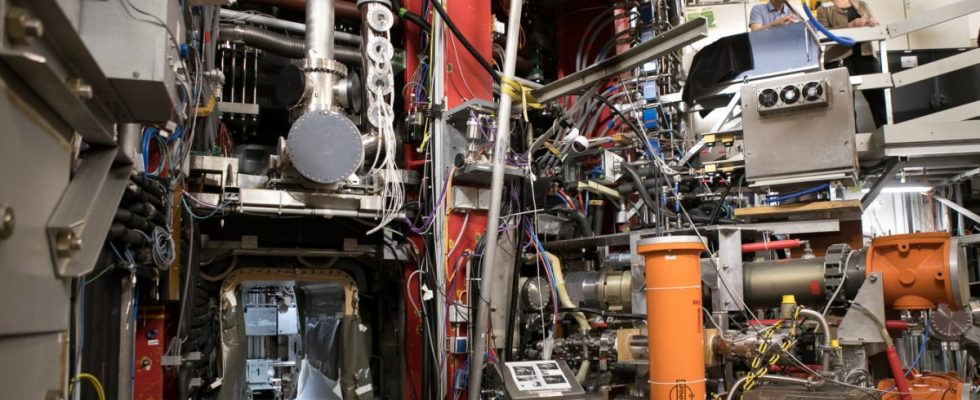The Bavarian master plan for nuclear fusion looks like this: Bavaria is supposed to host a “fusion cluster” and, if things go well, one day the first research fusion power plant will be located in the Free State. There will be 100 million euros until 2028 for six new chairs and up to 20 young research groups at universities. Collaboration between business and government research as well as start-ups is also supported. Bavaria is thus one step further on the Federal Research Ministry’s nuclear fusion funding plan, which Minister Bettina Stark-Watzinger (FDP) announced at the beginning of September.
Prime Minister Markus Söder and the Bavarian Science Minister Markus Blume (both CSU) present their master plan with Sibylle Günter, director of the Max Planck Institute for Plasma Physics (IPP), in Garching. Since 1991, research has been carried out on a tokamak reactor that uses magnetic fields to hold plasma together so that fuel can fuse.
This basic research uses energy and no electricity is produced. In theory, how energy production could work has been known for decades. The fuel materials deuterium and tritium are heated to more than 100 million degrees so that they fuse into new atoms and release energy. But there is a lack of practical implementation, even if progress is being made, such as the net energy gain in December 2022 at a system at the California National Ignition Facility.
Stark-Watzinger’s ambitious schedule had already caused a stir, She said she expects electricity from nuclear fusion to be available in ten years, she told the Today Journal. Söder speaks of “ten to 20 years until it finally starts”. Later he says: “You need optimism.”
In order to distribute the money, a commission of experts from business and science should first be founded, which will help decide which universities will get the new chairs. Their composition is not yet known.
Two approaches are competing in the race to become the first fusion power plant: laser fusion and magnetic fusion. The Bavarian funding program wants to be “technology-open,” even if the IPP only relies on magnetic fusion. The most surprising goal of the funding program is probably the construction of a demonstration power plant in Bavaria. “The IPP will not build a research reactor, we need public-private cooperation for this,” says Max Planck Director Günter. Minister Blume says: “We want to show that nuclear fusion works commercially in practice.” He sees a possible demonstration reactor in ten years.
Germany has been involved in the giant Iter project since 1985, and the IPP is also involved in research there. In addition to great ambitions, the plant in southern France is known for its bureaucratic hurdles (33 countries involved) and its financial plan that got out of control (20 billion euros, as of today). What does 100 million euros bring from Bavaria? With the nuclear fusion mission, the state government also wants to work for a successor to the 32-year-old tokamak in Garching. Estimated necessary investments: up to one billion euros over the next ten years.

